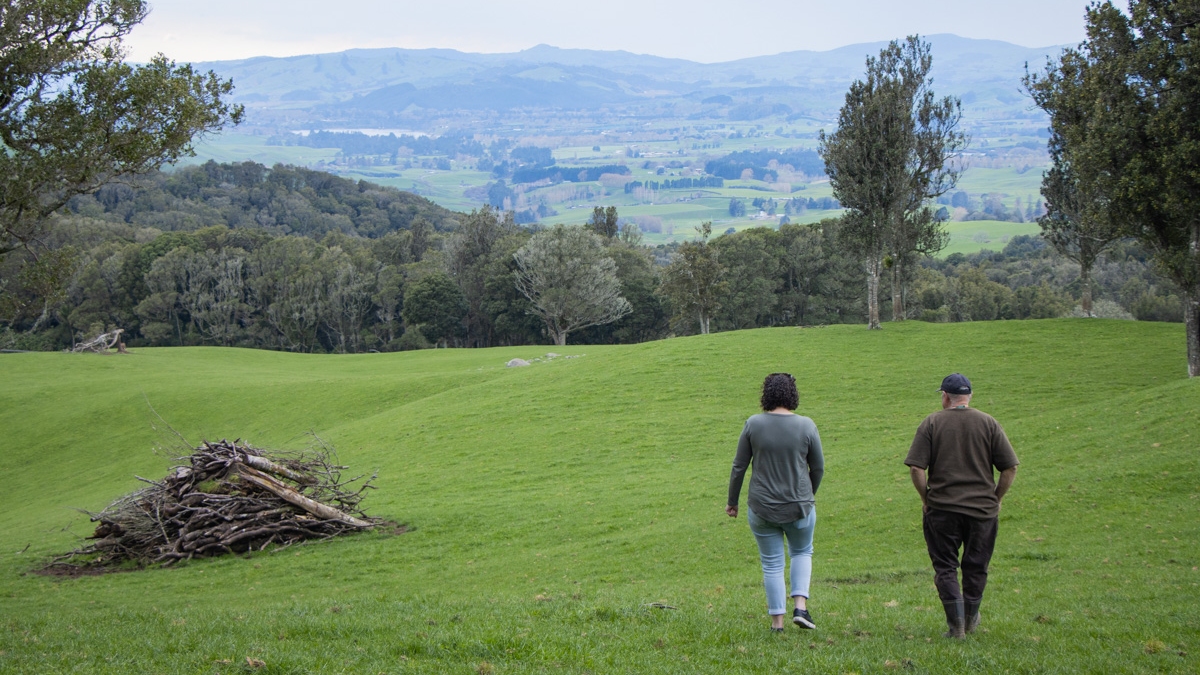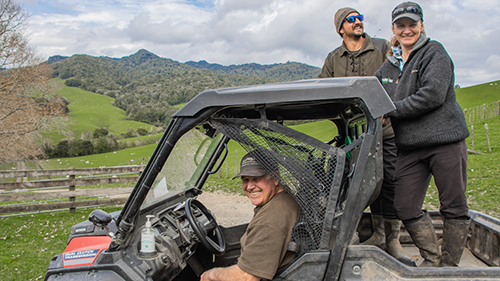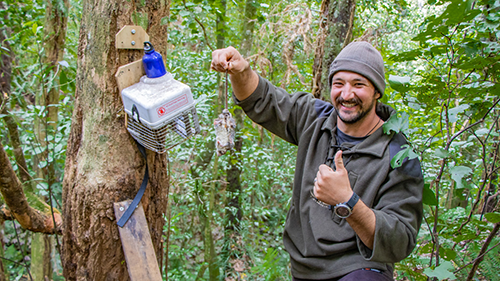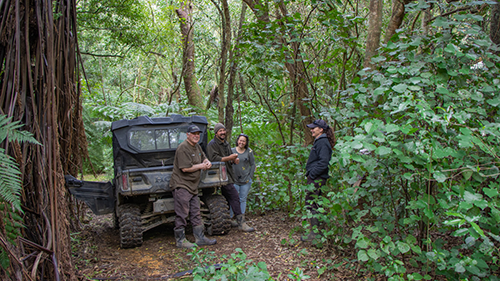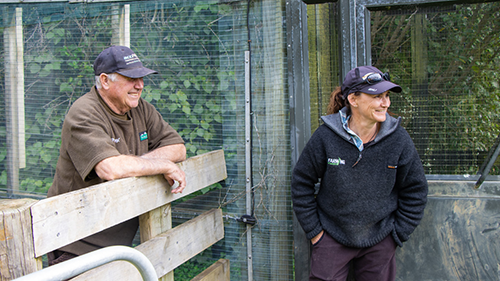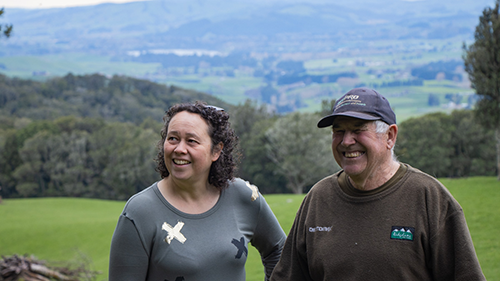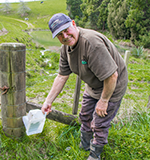 “A huge amount of money is being spent on sites like Maungatautari and it is important that if you are adjacent to those sites that you play your part with protecting the birdlife.”
“A huge amount of money is being spent on sites like Maungatautari and it is important that if you are adjacent to those sites that you play your part with protecting the birdlife.”
– Bill Garland, landowner
Landowners Bill and Sue Garland live next to Sanctuary Mountain Maungatautari and have a problem with kākā spilling out from the reserve.
“I hate them,” declares Sue Garland. “They eat all your fruit. They really hammer the avocados and strip the trees of mandarins, and they screech loudly.”
The Garlands like to talk about such problems. The loud and large forest-dwelling parrots are just one bird species spilling over the mainland ecological island’s predator-free fence and which the couple are trying to protect from mammalian predators.
“Sue also doesn’t much like the falcon because they are chasing away the kerurū,” says Bill, pictured, of the opportunistic predator birds that have taken up residence on the Garland’s property.
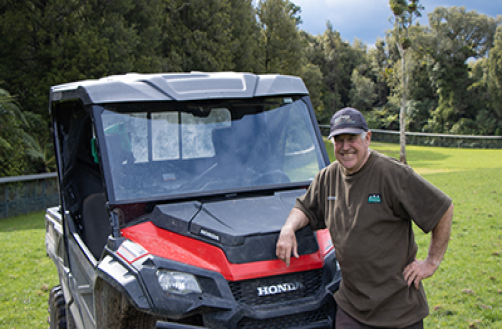
Bill and Sue’s 430-hectare beef and lamb farm is part of the Bush to Burbs (B2B) project, set up by the Waikato Environment Centre Trust to accelerate bird spillover from Maungtautari and create safe corridors for them out towards Cambridge.
The B2B project, which has received $129,517 from Waikato Regional Council’s Natural Heritage Fund over three years, provides traps to landowners for predator control on their properties.
It has been estimated there is about 1000 hectares of remnant bush and vegetation across the 11,500-hectare project area.
The Garlands, who have been retiring steep land and forest fragments since the 1980s, were already controlling pest animals such as possums, rats and stoats with a network of 60 bait stations and three self-setting AT 200s, but B2B will enable them to extend their pest control management programme with more traps.
B2B coordinator Karen Barlow says there are priority areas for predator control within the project, such as properties within three kilometres of the predator fence and those with bush remnants, but all landowners within the project’s boundaries are eligible for traps. The focus for the first year is possum control, but rat and mustelid control will be rolled out in subsequent years.
“The birds are coming whether predator control is happening or not,” says Karen.
Already, landowners next to the fence are seeing robin, tomtit and tieke on their boundary, and a neighbour of the Garlands has had pekapeka-tou-roa (long-tailed bats) roosting under her sun umbrella.
“Because people are seeing such whizzy stuff, it is crucial we help protect them,” says Karen.
“We can expect to see more of these sightings over time as the sanctuary becomes more crowded and as more area outside the fence is restored, planted and protected.”
The predator control will be undertaken by landowners who choose to take part in the project. They will be responsible for installing, servicing and maintaining their traps, and providing their own bait. All trapping results will be required to be entered into Trap NZ, a free service used for recording trap, bait, monitoring and biodiversity outcome data.
B2B complements other Waikato landscape scale restoration projects such as Taiea te Taiao, a project driven by NZ Landcare Trust to connect Maungataurai and Pirongia maunga with an ecological corridor of native forest habitat, and Hamilton Halo, which was launched by the regional council in 2007 to increase the number of tui and bellbirds that survive in bush breeding areas within 20 kilometres of Hamilton city.
“A huge amount of money is being spent on sites like Maungatautari and it is important that if you are adjacent to those sites that you play your part with protecting the birdlife,” says Bill, was made an Officer of the New Zealand Order of Merit (ONZM) for services to farming and conservation in 2004.
“What people also don’t really appreciate is that if you get birds moving from these sites you will get a lot of natural regeneration because they carry seeds.”



